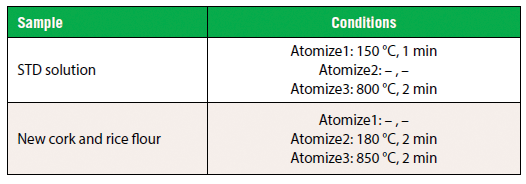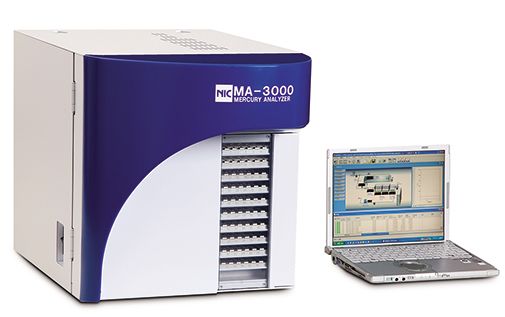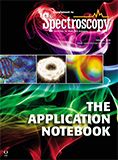Total Mercury in Cork Stoppers Using Direct Mercury Analysis
Application Notebook
This application note demonstrates the ability of the NIC MA-3000 direct mercury analyzer to analyze new cork samples with accuracy and precision, in compliance with US EPA Method 7473-Mercury in Solids and Solutions by Thermal Decomposition, Amalgamation, and Atomic Absorption Spectrophotometry.
In a 2014 study (Lopes, C.B., et al. Environ Sci Pollut Res (2014) 21: 2108), it was shown that stopper-derived cork is an effective biosorbent towards bivalent mercury at environmentally relevant concentrations and conditions. Only 25 mg/L of cork powder was able to achieve 94% of mercury removal for an initial mercury concentration of 500 µg/L. When cork is employed for remediation, it is important to quantify the absorbed mercury.
Wine corks are also recycled into other consumer products, where the mercury uptake from the wine may need to be quantified. Mercury is dangerous to both natural ecosystems and humans because it is highly toxic, especially due to its ability to damage the central nervous system. Mercury poses a particular threat to human development in utero and in early childhood. Thus, to prevent mercury poisoning, it is necessary to accurately quantify total mercury in recycled cork and cork used intentionally for mercury remediation.
Experimental Conditions
Calibration is done using certified aqueous ionic-mercury standard solution diluted to the required concentration. The least-squares regression method is used to create and complete the calibration curve.

Analysis was performed using the NIC MA-3000 dedicated direct mercury analyzer that selectively measures total mercury by thermal decomposition, gold amalgamation and cold vapor atomic absorption spectroscopy. The MA-3000 analyzer measures mercury in virtually any sample matrix-solid, liquid, and gas-and offers quick results without time-consuming or elaborate sample preparation processes.

Rice flour (1568a) measured after all cork samples for reliability assurance.
Results

Rice flour (NIST 1568a): Certificated values 5.3~6.3 µg/kg
Conclusion
This report demonstrates that NIC MA-3000 analyzes new cork samples with accuracy and precision and analyzes rice flour (NIST 1568a) after repeated analysis of new cork. It is a perfect solution to today's increasing laboratory demand for easy, fast, and accurate mercury measurements.
References
(1) WHO HP: http://www.who.int/ipcs/assessment/public_health/mercury/en/.
(2) Research paper: https://link.springer.com/article/10.1007%2Fs11356-013-2104-0.
(3) FDA HP: http://www.gpo.gov/fdsys/pkg/CFR-2005-title21-vol7/pdf/CFR-2005-title21-vol7-chapI-subchapG.pdf.

Nippon Instruments Corporation
14-8, Akaoji-cho, Takatsuki-shi, Osaka. 569-1149
tel. +81-72-694-5195, fax: 81-72-694-0063
Website: www.hg-nic.com

Best of the Week: AI and IoT for Pollution Monitoring, High Speed Laser MS
April 25th 2025Top articles published this week include a preview of our upcoming content series for National Space Day, a news story about air quality monitoring, and an announcement from Metrohm about their new Midwest office.
LIBS Illuminates the Hidden Health Risks of Indoor Welding and Soldering
April 23rd 2025A new dual-spectroscopy approach reveals real-time pollution threats in indoor workspaces. Chinese researchers have pioneered the use of laser-induced breakdown spectroscopy (LIBS) and aerosol mass spectrometry to uncover and monitor harmful heavy metal and dust emissions from soldering and welding in real-time. These complementary tools offer a fast, accurate means to evaluate air quality threats in industrial and indoor environments—where people spend most of their time.